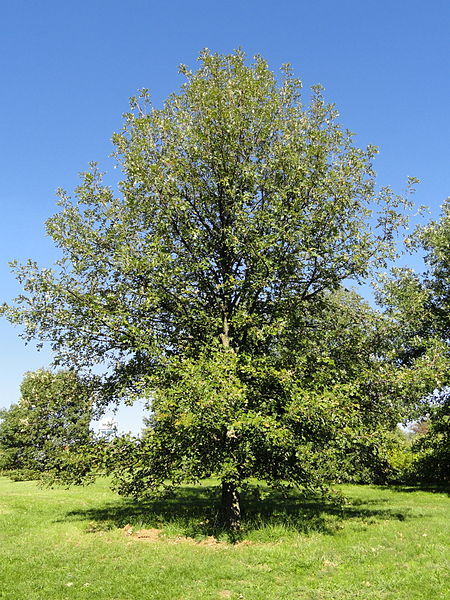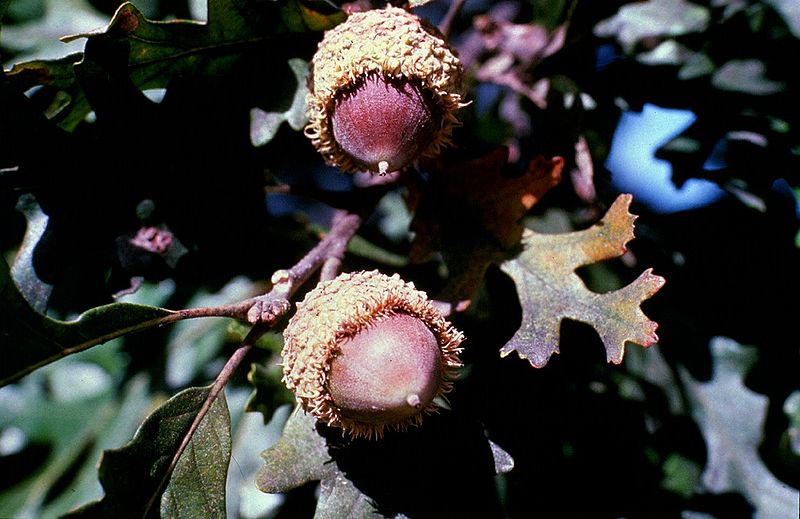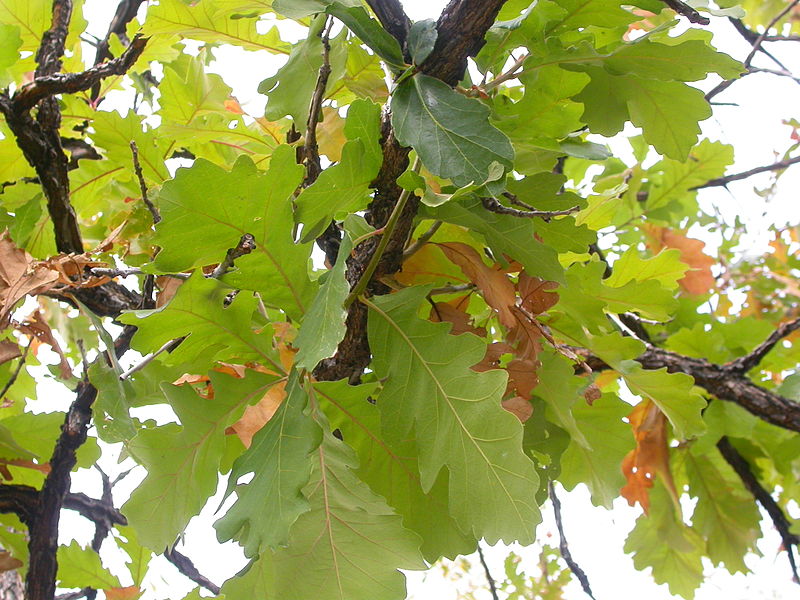This month we’ll be talking about one of the lesser known oaks, the bur oak (Quercus macrocarpa). These trees are actually quite common in the urban environment – if you know what you’re looking for. Their leaves resemble a deranged fiddle, having little to no uniformity between one to the next (unlike the red, white, or black oak). In the fall they turn a pretty copper-yellow, causing them to be the black sheep of the oak family (that typically change with bronze to red colouring).

The young branches of bur oaks look thick and corky, making them almost appear dead, but they’re not! If you look closely you’ll see the small buds waiting to break open in spring – sometimes a little later in the season than other species (depending on how established the particular tree is). As the tree ages, the bark develops grooves so deep and numerous that it often damages the rope used by arborists to climb up the trees for pruning.
The bur oak is an important timber species – surprising isn’t it, since you’ve probably never seen it advertised? When it is used in flooring and other timber products it is sold as white oak, which is a much more common household name than bur oak, therefore making it marketable (really, who’s going to buy a bur oak floor?)

The acorns resemble burs (hence the name) and can often be eaten straight off the tree (unless they taste awful – then the tannin levels are high – so boil them first). They can also be cut up for use in culinary pursuits, ground down for a thickener in soups, or used as a coffee substitute when traditional coffee is unavailable (and you’re really desperate).
Traditionally, bark from the bur oak was used to make baskets, treat stomach issues, and to stop hemorrhaging. Even now, you can follow traditional practices and make mulch out of fallen, decomposing leaves to repel certain unwanted garden pests (grubs, slugs, etc.) – but be careful not to use fresh leaves as this can hinder growth of garden plants!

The bur oak is a popular tree for urban sites with tough growing conditions – they are used across the Northeastern United States to reforest past coal-mining areas (it doesn’t get much tougher than that). They are drought tolerant and grow a deep tap root when they are young, making them a great species for newer houses where the soil has been compacted and quickly switches from saturated to dry. Because of occasional transplant sensitivity, it is better to plant this species in the spring when it has more time to establish itself before the ground freezes.
LEAF offers bur oak as part of our Backyard Tree Planting Program, so if you want to create some shade with this unique-looking tree, contact us today to book a consultation with one of our arborists!
Join me next month when I explore the life history of the blue beech – the tree with many names.
